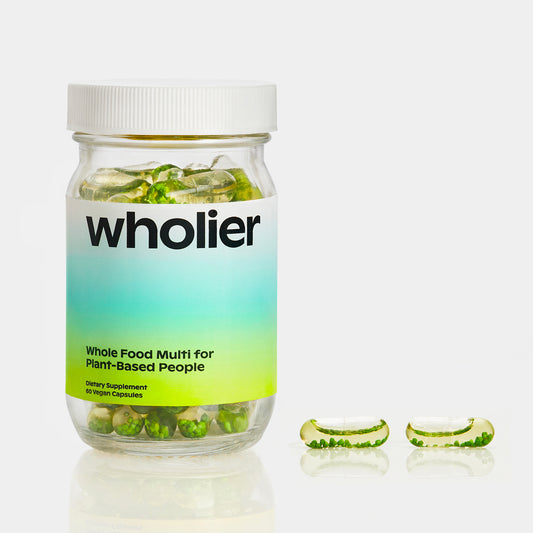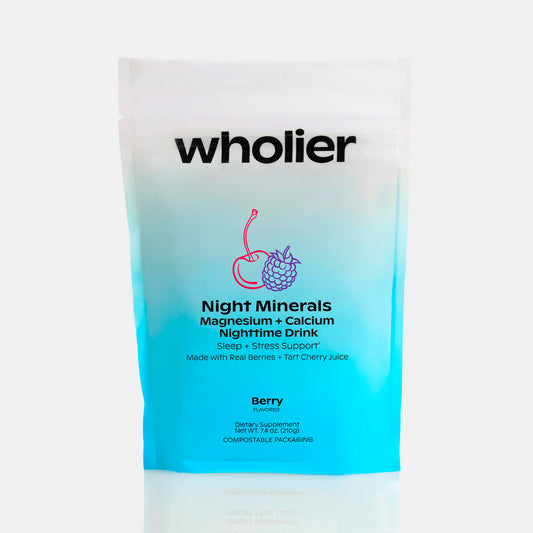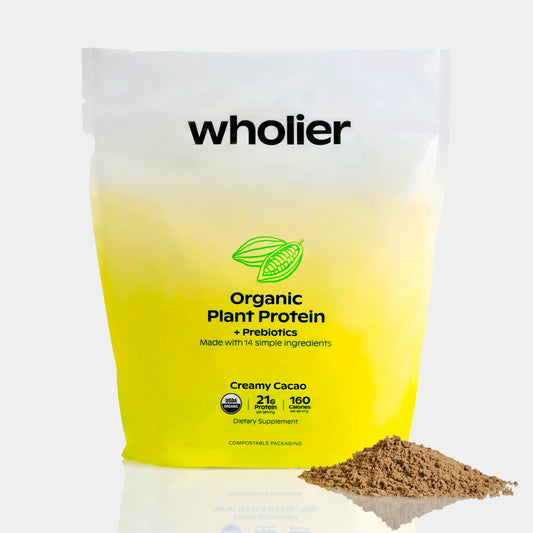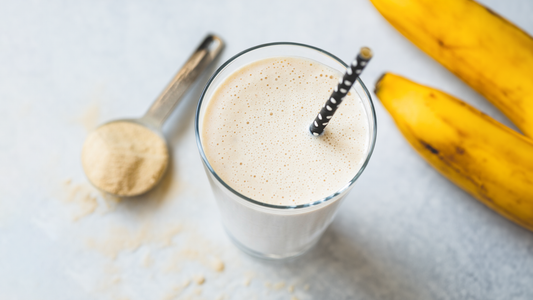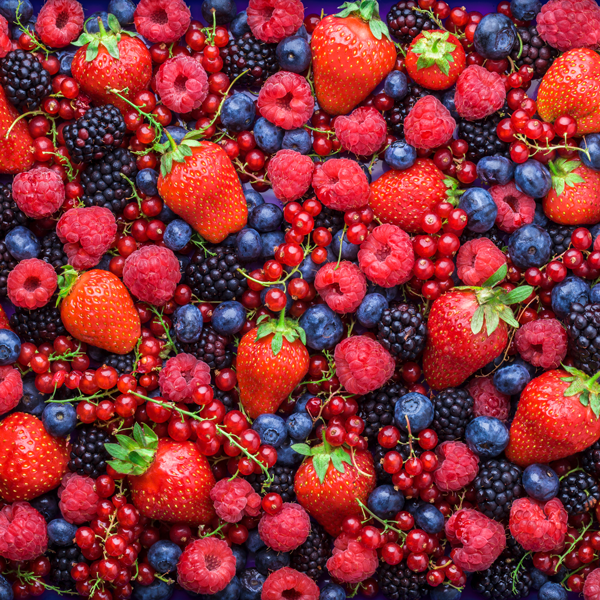
Antioxidant Foods: What They Are and Why You Need Them
Learn about the benefits of the most antioxidant-rich foods and why you should add them to your diet.
You've probably heard the term "antioxidants" before, but do you know what they really are and why they're so important? Antioxidants are compounds found in certain foods that help protect our cells from damage caused by free radicals - unstable molecules that can harm our DNA, proteins, and cell membranes.(1) This damage can contribute to aging, cancer, heart disease, and other chronic conditions. By neutralizing free radicals, antioxidants can help prevent or slow down this damage and keep our bodies healthy.
But, with so many different types of antioxidants and sources of antioxidant-rich foods out there, it can be hard to know where to start. In this article, we'll break down some of the key antioxidants, their health benefits, and the most antioxidant-rich foods you can add to your diet.
What Are Antioxidants?
There are several types of antioxidants, but some of the most well-known and well-studied include:
- Vitamin C: This water-soluble vitamin is found in many fruits and vegetables, including citrus fruits, berries, kiwi, peppers, and broccoli. Vitamin C is a potent antioxidant that can help boost immune function, reduce inflammation, and protect against chronic diseases like cancer and heart disease.(2)
- Vitamin E: This fat-soluble vitamin is found in nuts, seeds, vegetable oils, and leafy greens like spinach and kale. Vitamin E helps protect cell membranes from oxidative damage and may also have anti-inflammatory effects.(3)
- Beta-carotene: This carotenoid is found in orange and yellow fruits and vegetables, like carrots, sweet potatoes, and pumpkin, as well as leafy greens like spinach and kale. Beta-carotene is converted to vitamin A in the body and acts as an antioxidant, protecting cells from damage and helping to maintain healthy skin and eyesight.(4)
- Selenium: This mineral is found in nuts, seafood, and meat. Selenium helps protect cells from oxidative damage and may also have anti-inflammatory effects. It's also important for thyroid health and immune function.(5)
- Flavonoids: These compounds are found in many fruits, vegetables, and herbs, as well as in tea, cocoa, and red wine. Flavonoids have antioxidant and anti-inflammatory effects and may help protect against cancer, heart disease, and neurodegenerative diseases.(6)
What Are the Health Benefits of Antioxidants?
The health benefits of antioxidants are numerous and well-studied. Here are just a few examples:
- Reduced risk of chronic diseases: Antioxidants can help protect against chronic diseases like cancer, heart disease, and diabetes by reducing oxidative stress and inflammation in the body.(7)
- Improved immune function: Antioxidants like vitamin C and selenium are important for immune function and can help support healthy immune responses.(8)
- Healthy skin: Antioxidants like vitamin C and beta-carotene can help protect skin from sun damage, reduce inflammation, and promote collagen production for healthy, glowing skin.(9)
- Brain health: Flavonoids and other antioxidants may help protect against age-related cognitive decline and neurodegenerative diseases like Alzheimer's disease.(10)
- Reduced inflammation: Antioxidants can help reduce inflammation in the body, which is a key driver of many chronic diseases.(11)
What Are the Most Antioxidant-Rich Foods?
Now that you know why antioxidants are so important, let's take a look at some of the most antioxidant-rich foods you can add to your diet.
- Berries: Berries like blueberries, strawberries, raspberries, and blackberries are packed with antioxidants, including vitamin C and flavonoids. One study found that eating blueberries daily for six weeks improved markers of oxidative stress in overweight adults.(12)
- Dark chocolate: Yes, chocolate can be good for you! Dark chocolate contains flavonoids and other antioxidants that can help reduce inflammation and protect against heart disease.(13)
- Nuts: Nuts like almonds, walnuts, and pecans are rich in vitamin E and other antioxidants, as well as healthy fats and fiber. Eating nuts regularly has been linked to reduced risk of heart disease and improved cholesterol levels.(14)
- Leafy greens: Vegetables like spinach, kale, and Swiss chard are high in antioxidants like beta-carotene and vitamin C, as well as other beneficial compounds like fiber and folate. Eating leafy greens regularly has been linked to reduced risk of heart disease, cancer, and other chronic diseases.(15)
- Tea: Green tea and black tea are both rich in flavonoids and other antioxidants that can help reduce inflammation and protect against chronic diseases like cancer and heart disease. Drinking tea regularly has been linked to improved cholesterol levels and reduced risk of stroke.(16)
- Tomatoes: Tomatoes are high in the antioxidant lycopene, which has been linked to reduced risk of heart disease and certain cancers. Cooking tomatoes can actually increase the availability of lycopene.(17)
- Spices: Spices like cinnamon, turmeric, and ginger are packed with antioxidants and anti-inflammatory compounds. Adding these spices to your meals can help boost the antioxidant content and flavor of your dishes.(18)
Antioxidants are vital for our health and can be found in a variety of delicious foods. By incorporating antioxidant-rich foods into your diet, you can help protect your cells from damage and reduce your risk of chronic diseases. So, next time you're grocery shopping, be sure to stock up on berries, dark chocolate, nuts, leafy greens, tea, tomatoes, and spices to give your body the antioxidant boost it needs.
Sources:
(1) "What Are Antioxidants?" Medical News Today, MediLexicon International, 30 Jan. 2019, https://www.medicalnewstoday.com/articles/301506.
(2) Carr, Anitra C, and Silvia Maggini. "Vitamin C and Immune Function." Nutrients, vol. 9, no. 11, Nov. 2017, p. 1211, doi:10.3390/nu9111211.
(3) Jiang, Qing, et al. "Vitamin E Supplementation and Heart Health: A Review." Journal of Cardiovascular Nursing, vol. 34, no. 6, Nov.-Dec. 2019, pp. 515–520, doi:10.1097/JCN.0000000000000637.
(4) Tanumihardjo, Sherry A. "Exploring the Roles of Vitamin A in the Diet and Cancer Prevention." Seminars in Oncology Nursing, vol. 33, no. 3, June 2017, pp. 203–215, doi:10.1016/j.soncn.2017.04.002.
(5) Rayman, Margaret P. "The Importance of Selenium to Human Health." The Lancet, vol. 356, no. 9225, 2000, pp. 233–241, doi:10.1016/s0140-6736(00)02490-9.
(6) Grosso, Giuseppe, et al. "Flavonoids, Vegetables, and Cardiovascular Disease." Current Opinion in Lipidology, vol. 24, no. 1, Feb. 2013, pp. 57–63, doi:10.1097/MOL.0b013e32835d10e9.
(7) Valko, Marian, et al. "Free Radicals and Antioxidants in Normal Physiological Functions and Human Disease." The International Journal of Biochemistry & Cell Biology, vol. 39, no. 1, Jan. 2007, pp. 44–84, doi:10.1016/j.biocel.2006.07.001.
(8) Hoffmann, Peter R., and Helmut Sies. "Chapter 4 - Micronutrient Dispositions: Vitamins and Trace Elements." Handbook of Nutrition and Diet in Leukemia and Blood Disease Therapy, edited by CarolS. Portlock and Michelle van Vliet, Academic Press, 2016, pp. 39–53, doi:10.1016/B978-0-12-407821-5.00004-9.
(9) Pullar, Juliet M., et al. "The Roles of Vitamin C in Skin Health." Nutrients, vol. 9, no. 8, Aug. 2017, p. 866, doi:10.3390/nu9080866.
(10) Spencer, Jeremy P.E. "Flavonoids and Brain Health: Multiple Effects underpinned by Common Mechanisms." Genes & Nutrition, vol. 4, no. 4, Dec. 2009, pp. 243–250, doi:10.1007/s12263-009-0136-3.
(11) Sies, Helmut. "Oxidative Stress: A Concept in Redox Biology and Medicine." Redox Biology, vol. 4, Nov. 2015, pp. 180–183, doi:10.1016/j.redox.2015.01.002.
(12) Stull, April J., et al. "Blueberries Improve Endothelial Function, but Not Blood Pressure, in Adults with Metabolic Syndrome: A Randomized, Double-Blind, Placebo-Controlled Clinical Trial." Nutrients, vol. 8, no. 2, Feb. 2016, p. 53, doi:10.3390/nu8020053.
(13) Katz, David L., et al. "Cocoa and Chocolate in Human Health and Disease." Antioxidants & Redox Signaling, vol. 15, no. 10, Nov. 2011, pp. 2779–2811, doi:10.1089/ars.2010.3697.
(14) Kim, Young-Eun, et al. "Nut Consumption and Risk of Cardiovascular Disease, Total Cancer, All-Cause and Cause-Specific Mortality: A Systematic Review and Dose-Response Meta-Analysis of Prospective Studies." Nutrients, vol. 11, no. 12, Dec. 2019, p. 2905, doi:10.3390/nu11122905.
(15) Boeing, Heiner, et al. "Critical Review: Vegetables and Fruit in the Prevention of Chronic Diseases." European Journal of Nutrition, vol. 51, no. 6, Sept. 2012, pp. 637–663, doi:10.1007/s00394-012-0380-y.
(16) Arab, L., and F. M. Liu. "Tea Consumption and Cardiovascular Disease Risk." The American Journal of Clinical Nutrition, vol. 98, no. 6 Suppl, Dec. 2013, pp. 1651S–1659S, doi:10.3945/ajcn.113.059345.
(17) O'Kennedy, Niamh, et al. "Effects of Tomato Extracts on Chemically Induced Oxidative Stress and Hyperproliferation in Cultured Human Keratinocytes." British Journal of Dermatology, vol. 148, no. 4, Apr. 2003, pp. 686–694, doi:10.1046/j.1365-2133.2003.05218.x.
(18) Aggarwal, Bharat B., et al. "Curcumin: The Indian Solid Gold." Advances in Experimental Medicine and Biology, vol. 595, 2007, pp. 1–75, doi:10.

